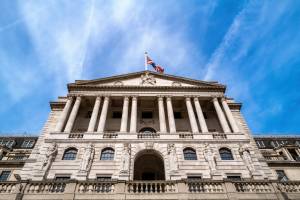For the first time in 20 years, the US dollar has reached parity with the euro. Ongoing war in Ukraine and supply problems have combined with high inflation and a slowdown in the economy to cause the euro to drop to levels not seen in decades.
The headlines are certainly alarming, though we’re not yet convinced that any meaningful action is needed from our side. There is a chance that this dynamic could actually benefit European investors, but let’s start by looking at the issues that have led to the dip.
Problems for the euro
Let’s examine the problems facing the Eurozone in 2022. Many, but not all, are related to the process of reviving various national economies after the turmoil of Covid-19-related closures.
- The first, and most impactful, is inflation, which reached an annual figure of 8.6% in June. This is the highest rate of inflation seen since the single currency was introduced.
- The second is a slow but steady decline in consumer confidence.
Then, in February, the situation was exacerbated (to say the least) by the beginning of the Russian invasion of Ukraine. Europe is heavily dependent on Russia for energy and, in the absence of stable and viable alternative energy sources, this could have serious consequences, particularly with the winter approaching.
This has all led to a feeling of broad discontent in Europe (and elsewhere). The sharp increase in energy prices is hitting consumers’ wallets hard and has further increased fears around inflation, which has meant a high selling pressure on the euro against the dollar.
A struggling euro also represents a growing lack of confidence in European economic strength and, arguably, in the EU project as a whole. This is partly why growth expectations have been consistently revised downwards since the beginning of the year. Further concerns about the euro and Europe has arisen thanks to an aggressive stance from the ECB, which caused the yield differentials between “central” and “peripheral” countries to rise.
The dollar on the rise
Across the Atlantic, the dollar is in the ascendency. 2022 has so far been a poor year for most assets, but the US dollar is not one of them. The American economy is holding up well, with the labour market proving strong. The sentiment of businesses and consumers is also notably better than in other developed countries.
The Central Bank of the US, the Federal Reserve, only began taking action to combat inflation in 2022. Thanks to the relative economic strength of the country, the Fed has been able to raise interest rates rapidly in the face of soaring inflation. By way of comparison, though the Bank of England began raising rates before the Fed, the UK’s weaker economy means that the steps have been far more moderate. As for the ECB, it decided to raise rates by half a point last week.
The response from markets to the Fed’s assertiveness has been positive. The US dollar has strengthened in 2022 because investors appear to have more faith in the Fed’s response to inflation than that of other major central banks. This has led investors to seek shelter in the dollar or dollar-denominated assets. For the moment, investors appear to trust the Fed more than the ECB or the BoE.
Our view
Christine Lagarde is in a difficult position at the helm of the ECB. Although some countries (and even regions) have shown small signs of getting inflation under control, the data still seems to suggest that a stronger response is needed from the ECB.
However, any interest rate hikes are unlikely to be welcomed by an already struggling economy, particularly if the energy crisis worsens as winter approaches. Markets currently predict a recession in the Eurozone over the next 12 months, with a higher probability than we’re seeing in the US. SImilarly, the UK may already be in a recession, according to former BoE Monetary Policy Committee member Danny Blanchflower.
It’s not all doom and gloom, though. Some commodity prices have begun to fall and this will have an impact on consumers and their monthly expenses, which should in turn affect inflation. The outlook for EU inflation and the continent’s broader economic health could improve as a result of these factors, or the ECB could decide to step in and affect monetary policy. In either case, the euro could begin to recover some of its losses.
Could the US be headed for a recession?
While the US is a major global economic powerhouse and makes up a large part of our portfolios, it is not the only currency we are exposed to. The euro has lost against other currencies, but to a far less significant degree. This tells us that the euro/dollar movement has been just as much a product of what’s happening in the US as it has been by Europe’s struggles.
The US economy is still showing signs of strength, but a recession at some point in 2023 is still a strong possibility. This would, naturally, lead to something of a reversal in the dollar’s rise that we’ve seen so far in 2022.
Advantages for investors
Finally, parity between the euro and the dollar might not actually be a bad thing for European investors. Any activity that investors based in the Eurozone carry out abroad will have benefited from the weakness of the euro. When the euro falls, holdings abroad increase in value (all other things being equal).
For UK investors, it’s a similar story. A strong dollar means that any US assets (i.e. US stocks or bonds) held by investors in the UK will have seen a better performance. The dollar can represent a safe haven for these investors in a highly uncertain macroeconomic environment. Of course, we’ll continue to monitor markets daily, with a particular focus on inflation data and central bank narratives, to see if some of the factors that have contributed to the dollar’s appreciation will show any signs of weakening.





